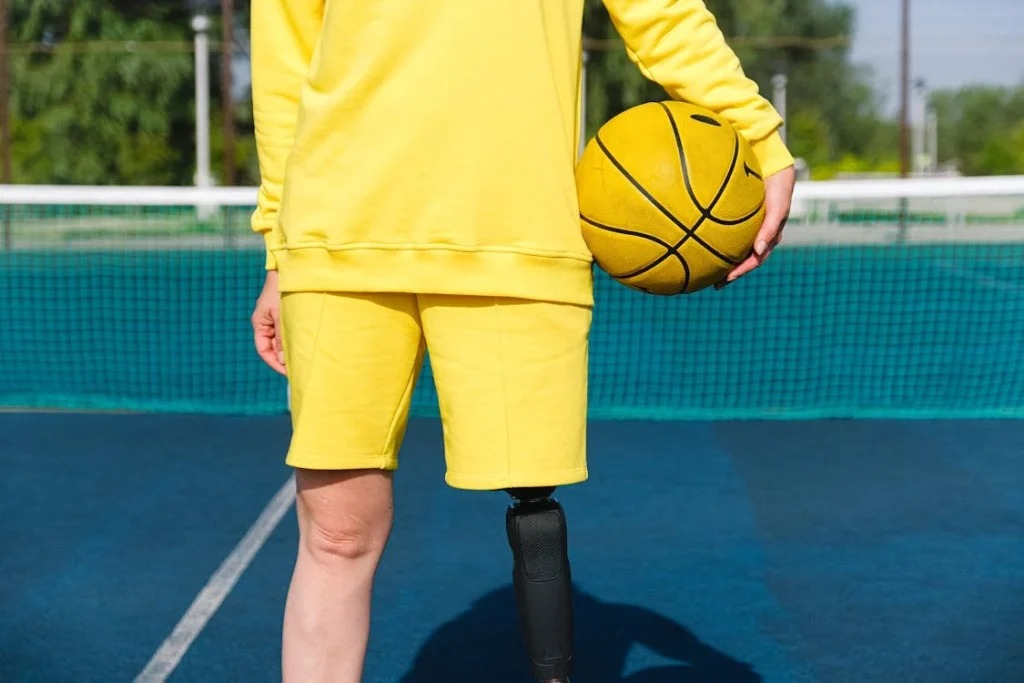Mobility means different things to different people. For some, it’s about walking across a room without pain. For others, it’s about running again after years of waiting. But for everyone who uses a prosthesis, comfort and confidence start with the socket — that essential part of the limb that connects body to machine.
At Robobionics, we don’t just design sockets. We design freedom, independence, and second chances. And while we could tell you all about the science, the innovation, and the technology behind what we do, today we want to share something more powerful — the real stories of people whose lives changed because their sockets finally fit the way they were supposed to.
These aren’t stories about perfection. They’re stories about persistence. About pain turning into purpose. About sockets that didn’t just support a limb, but supported a life.
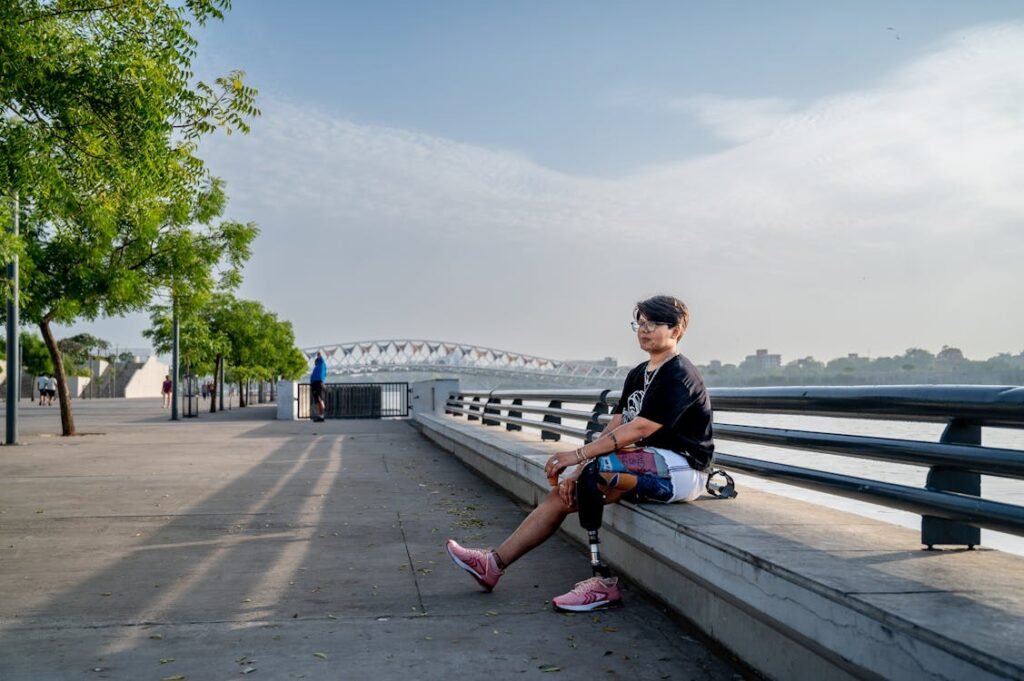
Story 1: Anjali’s Path Back to Motion
The Beginning: “I Just Wanted to Walk Without Fear”
Anjali was thirty-two when she lost her left leg below the knee in a motorbike accident. She had always been active — commuting through Pune’s crowded streets, managing a young child, and working full-time as a schoolteacher.
Losing her leg didn’t just take away her mobility — it took away her confidence, her identity, and her rhythm.
After surgery, the hospital fitted her with a basic prosthesis. She was grateful, but within a week of use, problems started. The socket felt stiff and heavy.
She could barely walk from her bedroom to the kitchen without feeling intense pressure behind her knee and soreness at the end of the stump.
The fear of falling was constant. She told us later, “I started avoiding movement. I even stopped standing while teaching.”
Her gait was uneven. She often leaned to the right to avoid pain. As a result, her back began to hurt, her posture collapsed, and every step became a reminder of what she had lost.
What hurt more was the emotional weight. Her son, only six, once asked, “Mumma, will you run again someday?” She smiled and said yes — but inside, she wasn’t sure.
The Turning Point: A Visit to Robobionics
Anjali came to us on the recommendation of her physiotherapist. When we met her, her first words were, “I don’t want to be someone’s burden.”
That sentence stuck with our team. It reminded us why socket comfort isn’t a luxury — it’s a foundation.
Her residual limb had healed well, but the old socket was generic, unresponsive, and poorly aligned. It didn’t follow her shape. It didn’t support her stride. Most importantly, it didn’t adapt to her body’s small daily changes.
We scanned her limb digitally and observed how she moved. She had built up awkward compensation patterns, limping without knowing it.
Her previous socket had created pressure at her tibial crest — a bony area prone to soreness — while leaving gaps elsewhere. This mismatch caused instability and skin breakdown.
Our goal was simple: create a socket that felt like an extension of her body, not a block she had to drag around.
The Custom Socket: A Second Skin
Using a flexible inner liner and a light yet strong outer frame, we designed a custom socket shaped exactly to Anjali’s contours.
We placed special cushioning at pressure-sensitive points and adjusted the trim lines to allow her full range of motion without pinching.
The suspension system was upgraded to a suction-based design — subtle, secure, and easy to don.
What made the difference wasn’t just the shape. It was the weight distribution. The socket hugged her limb evenly. It didn’t dig in, and it didn’t slip. She could finally trust each step.
During the first trial, she stood up, took five steps, and then stopped. She looked down at her leg, smiled faintly, and whispered, “I can’t feel the socket.” That’s when we knew we’d done our job.
Life After the Fit: “Now I Walk With My Head High”
Three months later, Anjali returned to teaching full-time — this time standing at the front of her class again. She walked her son to school without holding the railing. She even danced at her cousin’s wedding, barefoot for the first time in over a year.
“I thought the best part would be walking pain-free,” she said during a follow-up. “But it’s actually how I feel about myself. I feel like me again.”
Her posture improved. Her back pain disappeared. Her gait became more natural, and her energy returned. With better balance and reduced effort, she found herself moving without thinking about movement — the ultimate sign of socket success.
To this day, Anjali’s story reminds our team why we do what we do. It’s not just about crafting a better device. It’s about restoring the kind of quiet confidence that changes how a person carries themselves through the world.

Story 2: Rohan’s Return to the Field
The Accident That Changed Everything
Rohan was just 19 when a railway accident took his right leg above the knee. A budding footballer from Nagpur, he had dreams of going pro.
His energy was electric — always the first to show up at practice, always the last to leave the field. But in a single moment, that energy came crashing down.
When he woke up in the hospital after surgery, his first question wasn’t about his injury. It was about whether he’d play again.
His doctors were kind but honest: “You’ll need to adjust your expectations.” But Rohan didn’t want to adjust. He wanted to adapt.
After months of recovery, he was fitted with a standard transfemoral prosthesis. It was heavy, tall, and stiff. Walking with it felt like dragging a dead weight.
The socket sat high on his thigh and constantly chafed his groin area. After just an hour of wear, he had rashes and sore skin. Playing football? Out of the question. Even walking to the corner shop was exhausting.
He told us later, “The socket felt like a punishment. Like I was being reminded every minute of what I lost.”
From Frustration to a Fresh Start
Rohan’s mother found Robobionics online. She had read about how we work with young athletes and patients who refuse to slow down.
When we first met him, he limped in with his prosthesis under one arm. He looked angry, tired, and ready to give up.
We sat with him, not as doctors or engineers, but as listeners. We asked what mattered most. He didn’t hesitate. “Speed. Stability. And no more bruises.”
His residual limb had strong muscle definition — a good sign for balance — but the old socket was far too narrow at the top and lacked contour around his hip bones.
It also used a locking pin system that caused excessive pulling on his soft tissue. Every kick or twist would tug his skin. It wasn’t just uncomfortable — it was unsafe.
So, we got to work.
A Socket Made for Speed
We started by scanning his limb and designing a socket with a focus on dynamic movement. This wasn’t about basic standing or sitting. It was about motion — lateral cuts, sprints, and balance recovery.
We used carbon fiber for the outer shell, strong and feather-light, and integrated a flexible ischial containment shape that wrapped around his pelvis securely without pressing into it.
Instead of a pin lock, we used a suction-based suspension with an active vacuum system — allowing for a tighter, more responsive fit that moved with his leg, not against it.
The socket was trimmed to allow full hip flexion, and a sports liner was used to reduce skin shear and control sweat.
During his first try-on, we didn’t expect much. We usually keep things low-key on day one. But Rohan stood up, bent his knees, looked down, and started jogging across the clinic hallway. He turned, smiled, and said, “This… feels fast.”
Back in the Game
Rohan didn’t return to professional football. Not yet. But he did return to coaching.
He started training kids at a local ground and even participated in a local amputee sports meet, where he ran a 100-meter dash with his new limb. His form wasn’t perfect, but he crossed the finish line with tears in his eyes.
“It’s not just about playing,” he later shared. “It’s about being able to run when I want to, not when my socket allows it.”
The emotional shift was just as dramatic. His posture changed. His voice grew more confident. He stopped hiding his limb under long pants and started wearing shorts to training sessions, inspiring his students with every step.
What made this transformation possible wasn’t just the carbon frame or the liner. It was the custom approach. The socket was built around Rohan’s life — not just his leg. It allowed him to move freely, safely, and most of all, proudly.
Today, Rohan is one of our strongest advocates for active socket design. He often returns to our center to mentor new patients, especially young ones who think their athletic days are over.
He tells them, “You’re not broken. You just haven’t found your fit yet.”
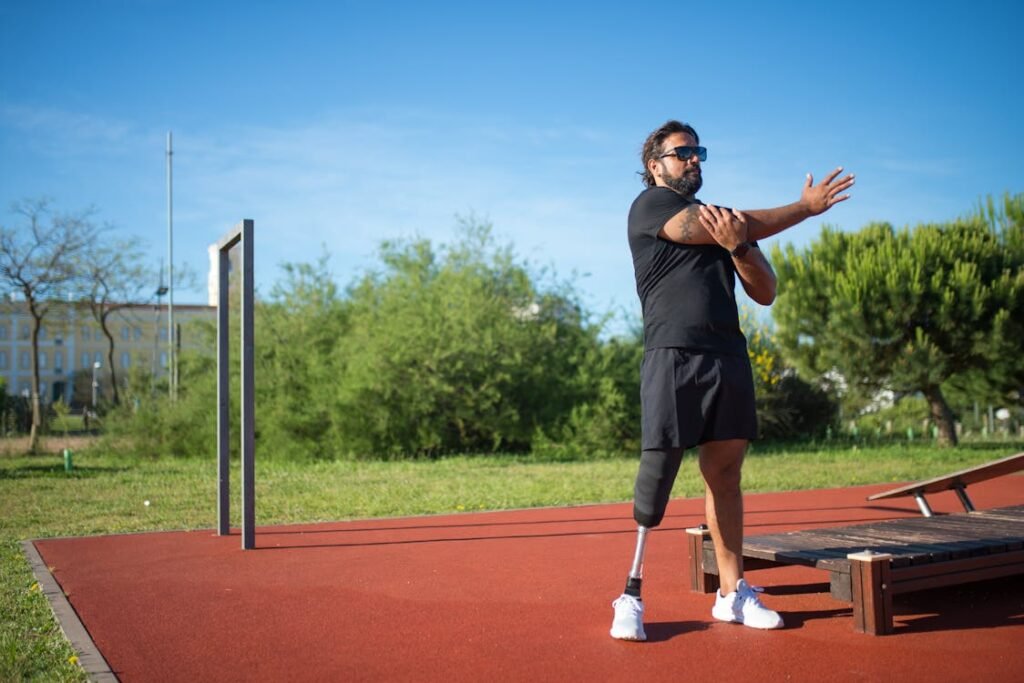
Story 3: Mr. Krishnan’s Quiet Comeback
A Life Paused After Retirement
Mr. A. Krishnan had spent over four decades working as a bank officer in Chennai. A disciplined man, deeply respectful and always composed, he lived a quiet, structured life.
He never asked for much — only that things work as they should. But after retiring at age 62, he faced an unexpected complication from diabetes that led to a below-the-knee amputation on his left leg.
At first, he took the news in silence. His wife told us, “He didn’t cry. He didn’t complain. He just folded his hands and said, ‘Okay.’”
But we later learned that he had stopped doing almost everything he loved — walking to the temple in the mornings, reading the newspaper on the balcony, and even visiting his grandchildren in Coimbatore.
He had been given a basic prosthesis through a government hospital. While grateful, he struggled with the socket. It was stiff and unresponsive. It dug into his shin when he sat, and he had to remove it multiple times a day to get relief.
He rarely wore it indoors, relying on a walker instead. He began spending more time in bed. For a man who had always been upright and alert, the inactivity was crushing.
His daughter finally brought him to Robobionics.
A Delicate Conversation
At our first meeting, Mr. Krishnan said very little. It was his daughter who did most of the talking. But his eyes said more than enough.
There was weariness, but also a flicker of hope. After listening to his daily routine, his concerns, and his hesitations, we asked him one question: “What do you miss the most?”
He paused, looked up, and replied, “Standing in my garden at sunrise.”
That became our goal.
Mr. Krishnan’s residual limb was soft and had begun to lose muscle tone due to inactivity. The shape was slightly bulbous with some scar sensitivity.
The current socket he was using was too deep, with hard trim lines that pressed against tender skin. It had no room for flexibility and no relief areas for bony landmarks.
This wasn’t a case for high-performance design. This was a case for high-comfort design.
A Socket That Respects the Body
We started with a soft inner liner made of medical-grade silicone — gentle enough for fragile skin but strong enough to provide structure.
The outer socket was fabricated using lightweight polymer with a built-in window to relieve pressure over his fibular head — a known sore spot.
The trim lines were carefully contoured to avoid his knee crease when sitting, which had previously caused chafing and limited how long he could wear the limb.
We used a simple suction suspension system with an easy-on sleeve that didn’t require tight pulling or twisting — something his arthritic hands had struggled with in the past.
Most importantly, we adjusted the alignment to match his natural posture. Mr. Krishnan had a slight forward lean and narrow base of support. Rather than force his body to adapt to the socket, we let the socket adapt to him.
The first time he tried it, he simply stood up, held the parallel bars, and said, “This doesn’t hurt.” He then took a few slow, careful steps, turned to his daughter, and gave her the smallest smile we’d seen all day — but one that spoke volumes.
The Return to Routine
What happened next wasn’t dramatic — and that’s what made it special. There were no races or big public wins. Just a slow return to a life that had once paused.
He began using the prosthesis every morning to water his plants. Then he started joining his wife for short walks on the terrace.
Eventually, he resumed visits to the temple — not every day, but a few times a week, always with quiet satisfaction.
“I don’t want to run,” he told us on a follow-up visit. “I just want to stand when I feel like standing. And sit when I feel like sitting.”
His socket gave him that control. It didn’t pinch. It didn’t slip. It simply worked — every day, without complaint. Just like him.
Mr. Krishnan’s story reminds us that mobility isn’t only about distance or speed. Sometimes, it’s about presence. The ability to simply be where you want to be, without pain, without fear, without compromise.
That’s what a truly custom socket does.
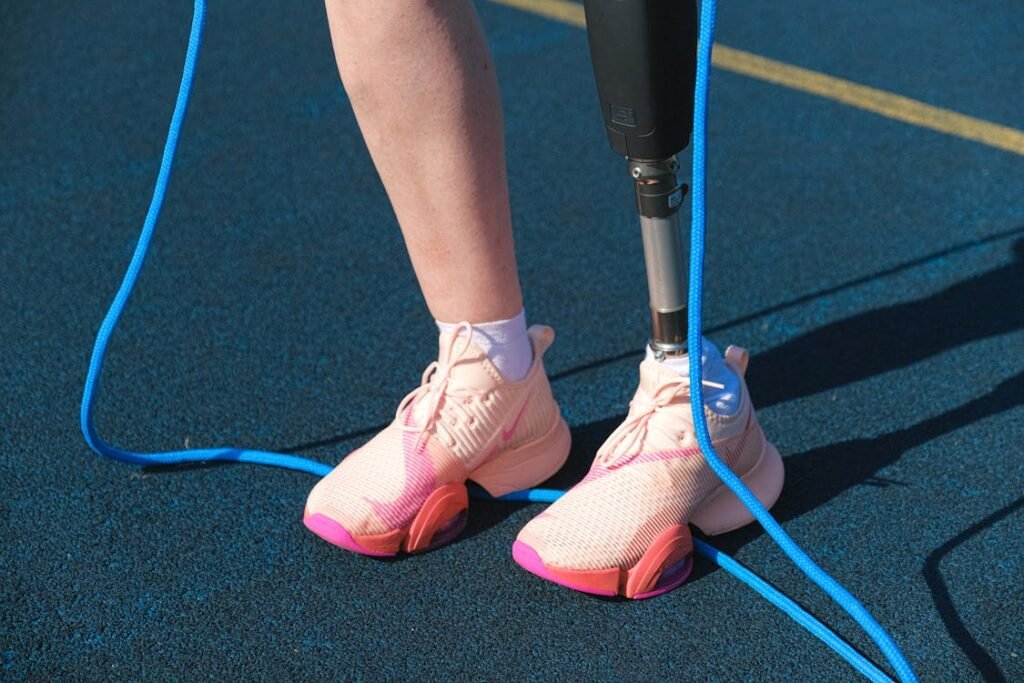
Story 4: Meera’s Bright Steps Forward
A Childhood Interrupted
Meera was just eight years old when doctors found a malignant tumor in her right femur. After months of chemotherapy and heartbreaking decisions, her leg was amputated above the knee to stop the cancer from spreading.
In a matter of months, her world shifted from playgrounds and painting classes to hospital beds and whispered conversations.
Her parents were heartbroken, but Meera never cried in front of them. She was the kind of child who smiled for everyone else, even while her body changed and her energy faded.
When she was first fitted with a standard pediatric prosthesis, she said nothing. But she used it less and less, eventually refusing to wear it altogether.
It was too big. It dug into her inner thigh. It hurt to sit. The socket had been designed with “standard” in mind — not Meera.
It didn’t reflect her movement, her needs, or her body. Her parents tried adjusting it, adding padding, buying longer socks. Nothing worked.
Her mother told us during their first visit to Robobionics, “She says she wants her leg back, but I think what she really wants is her freedom.”
Designing for a Moving Target
Children present a unique challenge when it comes to prosthetic sockets. They grow quickly, their limbs change shape constantly, and they often can’t fully explain what they’re feeling.
But they move a lot — and when something doesn’t feel right, they’ll avoid it altogether.
When we met Meera, she was quiet. She clutched her sketchbook while her mother spoke. She didn’t make eye contact. But when we asked her what she missed doing the most, she answered softly: “Running in the rain.”
Her residual limb was small, sensitive, and still healing from recent skin grafts. Her muscles were underdeveloped due to limited use, and her skin showed signs of irritation from uneven socket pressure.
We needed to build something not only precise and flexible, but also emotionally inviting.
So we decided to bring her into the design process.
A Socket Built for Joy
First, we made a digital scan of Meera’s limb to capture every curve and sensitive area. Then we printed a trial socket using soft transparent plastic so she could see how it would look and give feedback.
She pointed to one area and said, “This part feels like it’s squeezing too much.” That insight was gold.
We trimmed the socket lower in the groin area and shaped it to allow full hip movement without the pinch. A soft gel liner was used to give extra cushioning.
The suspension system was a vacuum-assisted design — secure but quiet and easy to manage. For a child, this means the limb doesn’t slip while playing and doesn’t make noise in class, which can be a source of embarrassment.
But the most important part? We let Meera choose the outer design. She picked a bright pink socket with tiny white clouds and added a sticker of her favorite cartoon character. It wasn’t just a socket anymore — it was hers.
The First Steps, Then the Sprint
When Meera first wore the new socket, she walked around our rehab room holding her mother’s hand. She smiled. Then she let go. Then, slowly, she picked up speed.
It was the first time we saw her truly move on her own. After a few steps, she turned back, panting, cheeks flushed, and said, “Can I go faster?”
Within weeks, Meera was running across her school’s courtyard again. Not perfectly. Not effortlessly. But joyfully.
She began wearing dresses again. She drew pictures of herself on swings and bicycles. Her teachers noticed she raised her hand more often in class. Her parents noticed that she laughed more — a real laugh, not a forced one.
The socket didn’t fix everything. But it gave her back her sense of self. That’s what true customization does — it listens, adapts, and supports both the body and the spirit.
Today, Meera still comes to our clinic for checkups, especially as she grows. But she walks in confidently, tells us what she’s outgrown, and even jokes about becoming a “prosthetic designer” one day so other kids can run in the rain too.
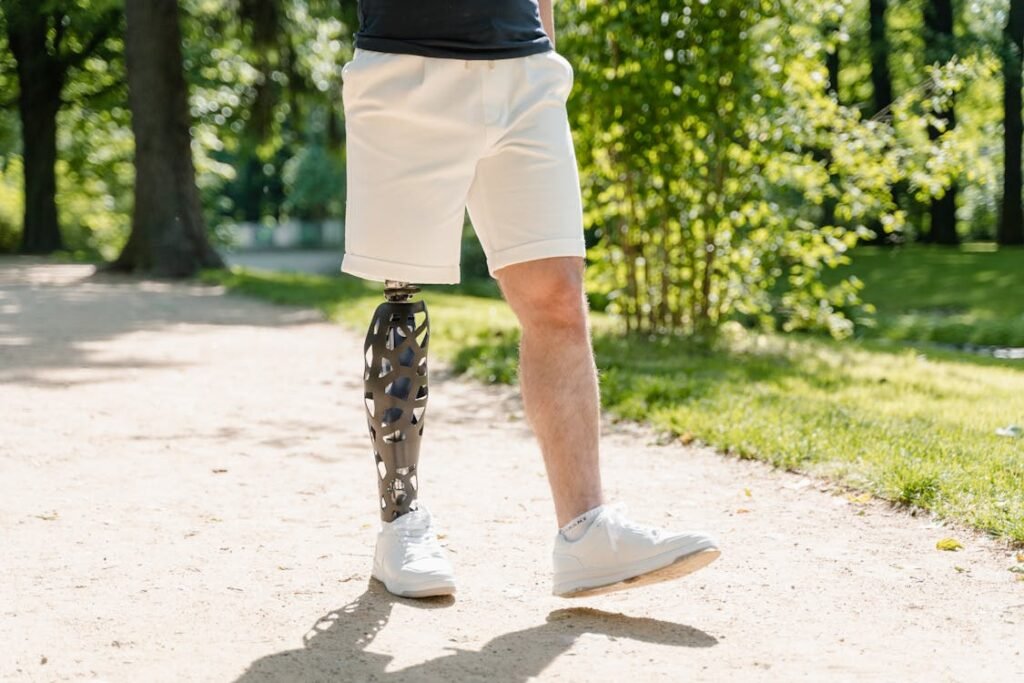
Story 5: Rajat’s Road to Resilience
The Entrepreneur Who Hit a Wall
Rajat was a 45-year-old entrepreneur from Hyderabad who ran a mid-sized logistics business. Always on the move — between warehouses, deliveries, and meetings — he built his career by being active, visible, and hands-on.
But a sudden bacterial infection in his lower leg led to complications. Within days, his left leg below the knee had to be amputated to save his life.
The speed of it all left him reeling. “I blinked, and my life changed,” he told us when we first met.
A few months after surgery, he was fitted with a basic socket and prosthesis. He tried to push through, returning to work earlier than expected, but it wasn’t long before he realized something was wrong.
The socket felt stiff and poorly aligned. It would twist during walking, press against his tibia, and leave deep red marks by evening.
He started taking fewer steps. Then fewer meetings. He avoided stairs, stopped site visits, and eventually began working mostly from home.
His energy dipped, and so did his sense of leadership. “How could I lead others,” he asked us once, “when I was struggling just to stand straight?”
Digging Deeper to Design Smarter
When Rajat arrived at Robobionics, he was determined, but tired. He didn’t want excuses — he wanted a solution. His goals weren’t about sport or speed.
They were about precision, control, and reliability — the things his business demanded.
His limb was well-shaped and had healed well, but his daily activity level was high. He walked on uneven ground, climbed in and out of vehicles, and stood for long hours.
His current socket didn’t support that lifestyle. It lacked flexibility in motion, slipped during pivoting, and placed too much pressure on the anterior tibia.
We redesigned everything.
We used a custom-molded inner liner with variable thickness — more padding in pressure zones, less bulk around the flex points. The outer shell was built with a lightweight carbon-kevlar blend, perfect for someone who needed durability without bulk.
We designed the trim lines to allow deep knee flexion without cutting into the soft tissues.
The suspension system was also upgraded. Instead of a standard pin lock, we gave him a hybrid suction-lock mechanism that offered both a secure hold and the comfort of vacuum relief.
It meant his socket stayed stable while he moved — no tugging, no twisting.
Reclaiming Purpose and Performance
Within weeks, Rajat was walking faster and longer. He started using stairs again. He began visiting his sites in person — wearing trousers without having to worry about noise or slippage.
He told us during his three-month review, “I walk into a client meeting now, and they don’t notice anything — and that’s exactly how I want it.”
But perhaps the most meaningful change was psychological. He no longer worried about whether his limb would hold up through a long day. He trusted it.
And that trust gave him back his ability to focus on what mattered most — growing his business, mentoring his team, and enjoying time with his family.
He now refers other amputees from his city to us. He often says, “It’s not just a socket. It’s your foundation. If that’s weak, everything shakes.”
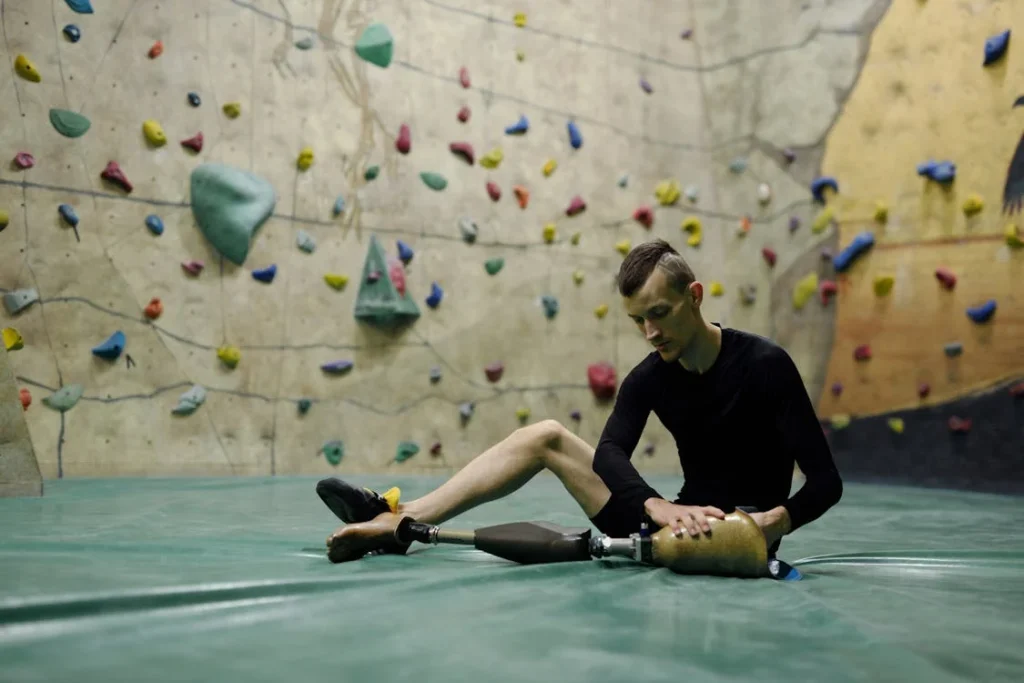
Conclusion
Behind every custom socket we design at Robobionics is a story. Not of machines, but of people. People who once sat across from us with questions in their eyes, hoping for answers. And what they all learned — and what we now know for certain — is this: mobility begins with the socket.
It’s the one piece that connects technology to the body, and if it doesn’t fit right, nothing else matters. But when it does — when it truly fits the person, not just the limb — lives change.
These stories are just a glimpse of what’s possible when precision meets empathy, and when design starts with listening. Whether it’s walking to the garden, chasing a football, running through the rain, or leading a team — the journey begins at the socket.
And at Robobionics, we’re honored to help make that first step — and every step after — as powerful, personal, and pain-free as it can be.



